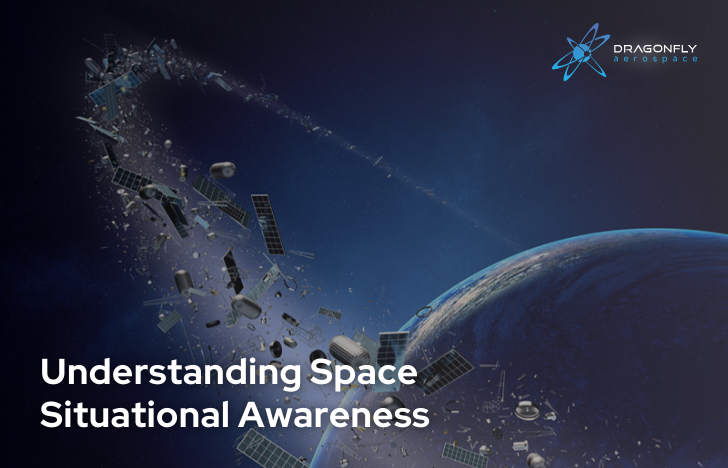
From tracking the Earth’s weather patterns and monitoring natural disasters to providing telecommunications and navigation services, society relies heavily on spacecraft to provide detailed information and services to streamline a range of industries in our modern world.
Thousands of satellites are launched on a regular basis and there are reportedly over 8,000 active satellites in various Earth orbits. It’s no wonder that space situational awareness (SSA) is becoming such an important part of space traffic management.
The space environment
Space Domain Awareness (SDA) enables a comprehensive understanding of the operational space environment with a key part of this being Space Situational Awareness — the knowledge and characterization of space objects and their environment.
SSA and SDA are crucial concepts in space exploration and operations. As humanity continues to expand its reach beyond Earth’s atmosphere, it becomes increasingly vital to understand and monitor the objects and activities in space. With the growing number of satellites, space debris, and potential threats, SSA and SDA play crucial roles in ensuring the safety, security, and sustainability of space activities.
What is Space Situational Awareness?
SSA refers to the knowledge and understanding of the current and future state of space. It involves observing, tracking, and analysing space objects such as satellites, spacecraft, and debris to determine their positions, orbits, and characteristics. By monitoring these objects, scientists and engineers can predict potential collisions and provide crucial information for space missions and operations.
Current SSA uses ground-based sensors and radars to continuously observe the space environment and collect data on objects’ positions, velocities, and other relevant parameters. This information is then analysed and shared with space agencies, private companies, and other stakeholders to make informed decisions. Unfortunately, this can constrain performance as sensors are in fixed locations, remote from the objects of interest.
Additionally, the sensed information can be subject to attenuation and distortion through a sometimes volatile propagation medium, potentially leading to a complete loss of data. However, placing sensors on satellites for in situ SSA measurements combined with data from ground-based measurements will allow many fine objects to be detected and tracked, objects that nevertheless, have the potential for damaging or destroying an operational space asset should a collision occur.
Space Situational Awareness in modern society
A key challenge in space situational awareness is the growing amount of space debris, which is made up of defunct satellites, spent rocket stages, and other fragments that are no longer operational but still orbiting the Earth. This debris poses a significant risk to operational satellites and spacecraft. By accurately tracking and cataloguing space debris, SSA enables space agencies and operators to manoeuvre their assets to avoid potential collisions.
Looking ahead, the importance of SSA only continues to grow. With ambitious plans for lunar exploration, asteroid mining, and beyond, our reliance on space assets will soar. Embracing advanced technologies like AI and autonomous systems will be paramount, while satellite-to-satellite SSA will empower us to navigate the complexities of space with even greater precision and confidence.
